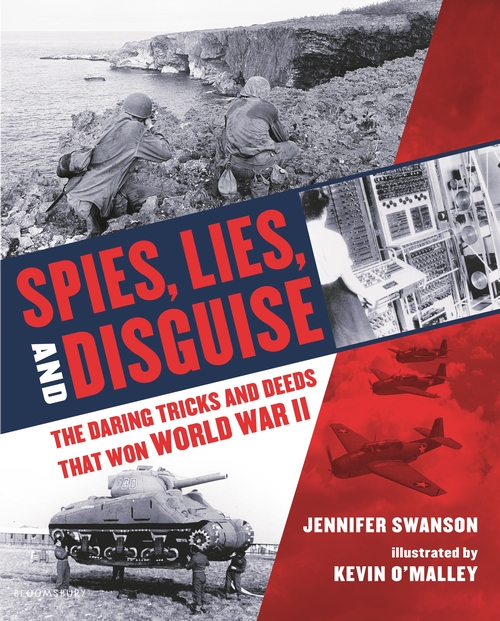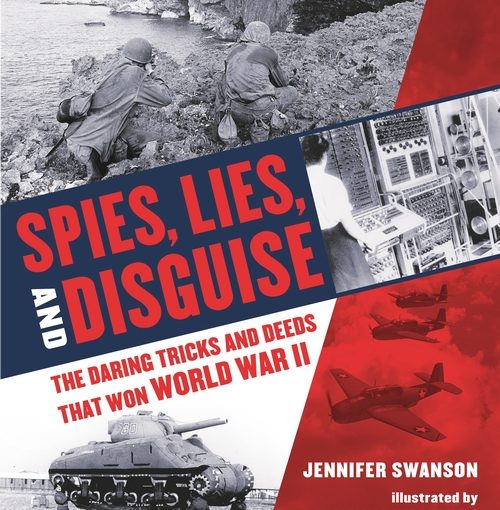I firmly believe that kids honestly want to learn. So far as the content, there are those things that they need to learn and those things that they want to learn. In middle school when kids start to earnestly learn about WW II they’re faced with the quandary of studying a horrifying period of human history, yet actually wanting to do it. Teaching or educating kids about this period of time is tricky too because there are so many angles that an author could approach it. Spies, Lies and Disguise, The Daring Tricks and Deeds That Won World War II by Jennifer Swanson with illustrations by Kevin O’Malley is an excellent supplemental text to those kids who already know the basics of WW II and want to learn more.

I say ‘the basics’, because readers will need to know the most common subjects that were involved like Great Britain, Germany, Hitler and other big topics. Our upper elementary aged student could read Spies, Lies and Disguise, but he wouldn’t know the basic elements of that time period so he wouldn’t enjoy it as much. They’ll also need to be middle school readers, both in terms of ability and content.
This is about WW II and the ploys that the Allied Forces used in combat. Sometimes the trickery is obvious (now, in hindsight) and at other times a bit gruesome. A great example of this is Operation Mincemeat; a real campaign that used a real corpse to accomplish trickery to the highest degree. We meet the two men who were the masterminds behind the insane idea of dressing up a corpse as an English Lt. – who just happened to have top secret document handcuffed to his wrist. Spoiler alert: the trick worked and the way that it was planned and executed is the stuff that you’d expect to see in top notch spy movies.
It’s the fact that Swanson makes the stories so appropriate for a middle school audience that will impress parents and educators. O’Malley’s illustrations bridge the gap to compliment the real-life photographs of the people, places or devices that the Greatest Generation used. That same audience will appreciate how it approaches that period of time. It’s factual and entertaining, without making light of anything; even though some of the tricks that were used are farcical when they were first brought up by the people back then.
This is middle school WW II at its best for the audience that is reading about the subject. It will make some readers curious about that period and make them want to study more about it. While at the same time it’ll provide just enough ‘nuggets’ of uniqueness or history to accent those papers that kids that age have to write.





 Facebook
Facebook Twitter
Twitter Flickr
Flickr GooglePlus
GooglePlus Youtube
Youtube